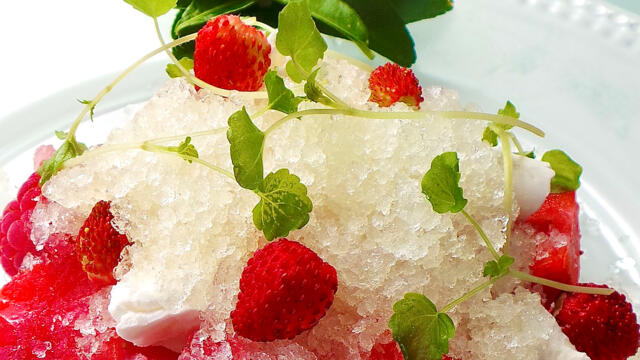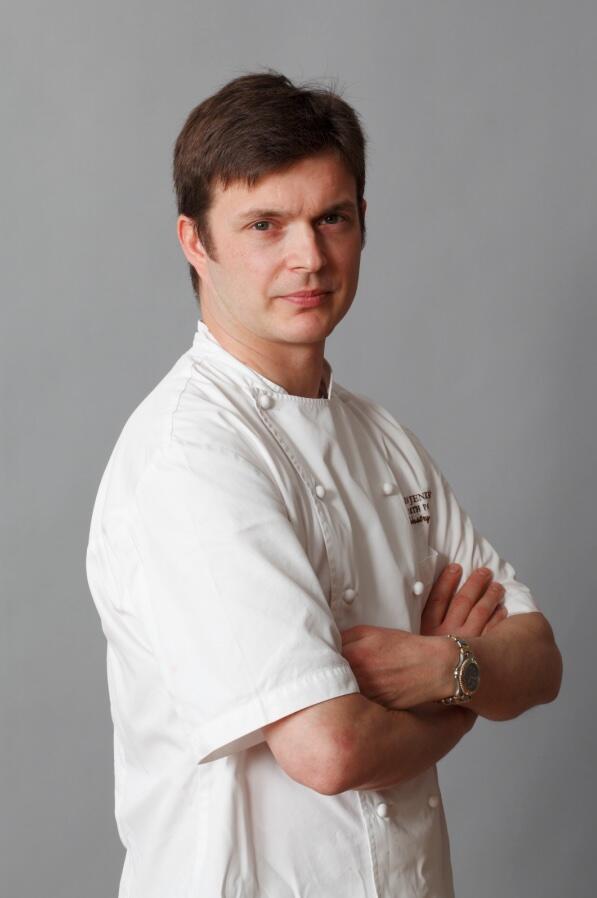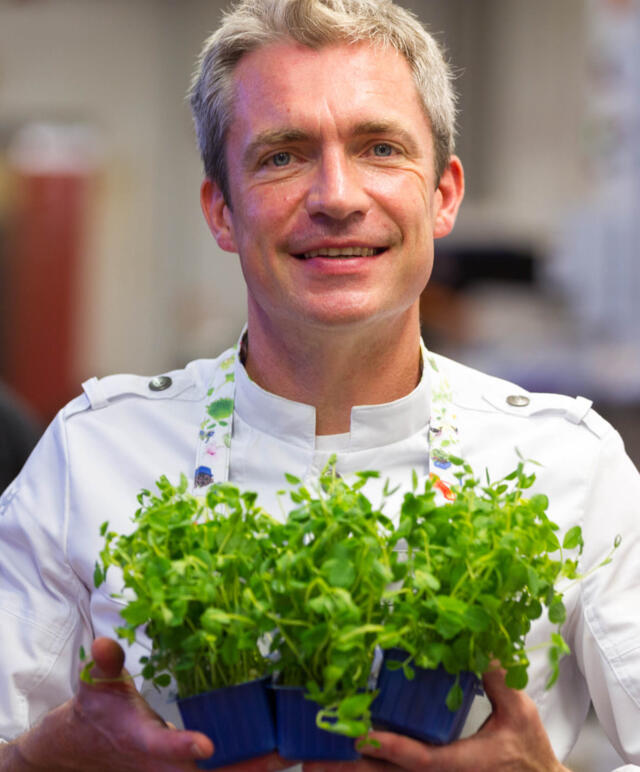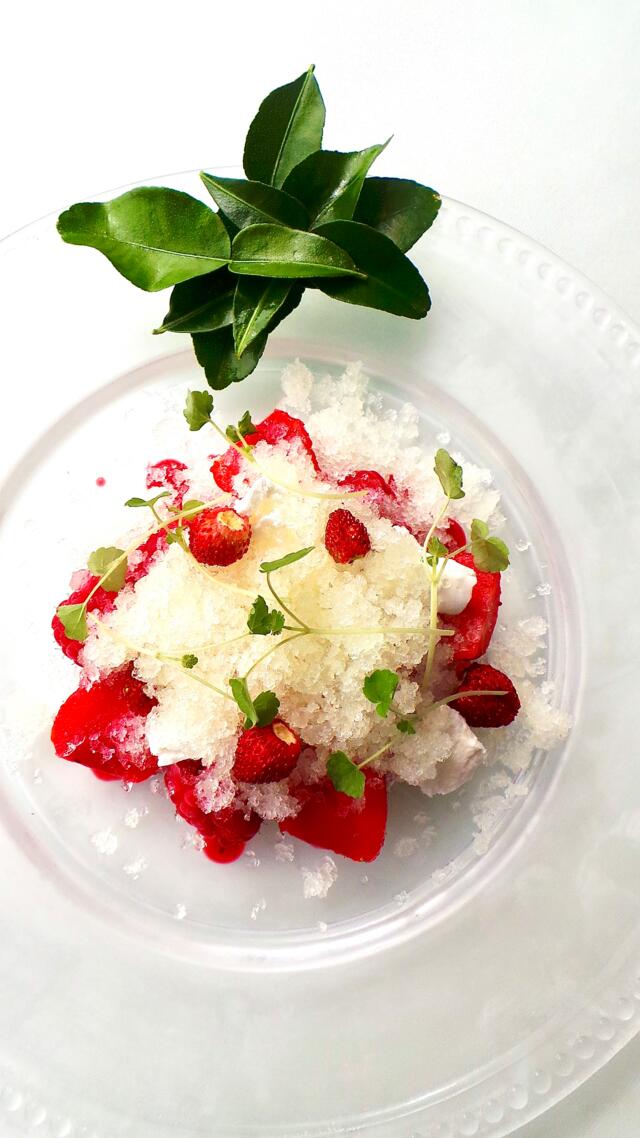
Patisserie is evolving, a sweet and savory crossover
The human craving for sweet things has been around forever. Where the use of sugar in food is slowly turning into a societal no-go, it actually did our pre-human primates a huge favor.
Simon Jenkins, Searching for the right balance
The human craving for sweet things has been around forever. Where the use of sugar in food is slowly turning into a societal no-go, it actually did our pre-human primates a huge favor. Calory-rich food was scarce, so consuming moderate amounts of sugar from fruits was necessary for their survival. Nowadays, (un)fortunately, foods with high amounts of calories are easily available all year, which is not surprising to pastry chefs who work with sugar on a daily basis. We absolutely feel they make our world a better place by catering to our biologically fueled sugar cravings, but we have to be honest; sometimes the mirror tells us we could do with a little less of the substance.
Award-winning UK pastry chef Simon Jenkins, who has over 20 years of experience in topflight establishments, who now runs SNJ-Patisserie gives us a glimpse of his thoughts about this topic. “Classical patisserie is typically quite rich and deemed as heavy, using lots of sugar and richer ingredients such as butters and creams. This makes dishes in general heavier to eat and fat rich instead of bringing a refreshing climax to a meal. I suppose that in the last 20 to 25 years things have started to move on, techniques started to change in a way that lighter products and techniques have been introduced. Personally, I have never been focused too much on sweetness and sugars, I believe it is more important to create a balanced dish by using the natural flavours when they are at their best and in season and using acidity to bring a level of cleanliness.”
The craft of Patisserie originated when the French people wanted to end their meal with something sweet, other than fruit or cheese. It was the year 1270 when baker Régnaut-Barbon rolled sweet, cone-shaped patisseries that looked like waffles. He called them ‘oubliés’. The craft grew more popular and today famous pastry chefs worldwide dazzle their guests with very technical, precise and above all, magnificent creations. The Frenchman Franck Pontais, Master Chef and culinary business development manager for Koppert Cress, adds: “The evolution of patisserie is phenomenal. Just think about the chocolate éclair from 30 years ago; it has evolved into all kinds of varieties. The pastry chefs themselves are humble, down to earth and well reserved. This kind of mindset is the foundation for the army-like discipline and precision in their work. Patisserie is truly viewed as a mark of elegance and refinement in French culture.”

Elegance and sophistication, The pinnacle
Franck continues, “My first job was being a butcher. I was only 14 and I absolutely loved it. Years later, when I went on my first date with my (now) wife, we sat next to the river drinking champagne. I then found out she was a vegetarian. We just left it at that, and that luckily didn’t keep us from getting married.” Next to his experience as a butcher, Franck enrolled in a culinary school in Paris for 5 years, trained with a demanding Meilleur Ouvrier de France and won his first gold medal at a gastronomic competition at 18 years old. “I started cooking vegetarian food more often, which was challenging at first, but got easier with more practice. Now I really love it. It gives me more opportunities to explore different ingredients. I also work for guests that prefer vegan food, and I quickly realized there aren’t many vegan recipes and products. Take cheesecake for example. I was in New York for my son’s 10th birthday. We walked down the avenues and every morning we went to a different place for a New York cheesecake breakfast. It was brilliant. The shops were fantastic. Back home I just wanted to reproduce that experience into a recipe. It resulted in the vegan sweet avocado cheesecake tart.” When browsing through Franck’s recipes you’ll notice they are relatively short and accessible. “My only goal is to make people think ‘I want to eat that’ when they see my recipes. I always tell my students in London that they get one chance to get the taste right and that they can spend their whole life making it beautiful. Taste always comes first, beauty comes second.”

No longer taboo, plants in patisserie
Simon: “For several years there has been a big trend to use cress and flowers for decoration with more and more varieties available, giving the chef a lot more versatility. I am a strong believer it is not just for color or to just finish a dish, but it should also enhance and blend with the flavours in a dish. When I left working for Gordon Ramsay, which was around 2007, I kind of thought that I wanted to try and evolve incorporating savory into desserts. I was in the position where I could be more creative. I guess that was the point where I started creatively testing with using vegetables in my creations. Ghoa Cress (coriander) was actually the first cress I tried, pairing it with carrots and yoghurt. Recently, I’ve used Zallotti Blossom in a blackcurrant tiramisu recipe. As well as looking pretty, the flavour of the flowers gave something to the balance of the dessert. The acidity of the blackcurrants to the creaminess of tiramisu cream ate really well with the Zallotti Blossom giving it an extra interesting dimension.”
It may be hard to tell from a photo, but the summer berry meringue recipe contains Kaffir Lime Leaves. Simon: “When somebody gives a Kaffir Lime leaf to you, it’s quite tricky to know what to make because it has a very pungent flavour. It makes you think of Asian influences, but I didn’t want to go down that road. I created this recipe during summer and decided to do something refreshing based on red fruits that would sit well with meringue. This was the result. It contains just a little bit of sweetness from the meringue, natural flavours from the fruits and the dish benefits from the chilled feel and pungent flavours from the granite. It is very light and refreshing.”
When we ask him if there’s anything he’d like to add as a final statement Simon continues, “Even though it would have been frowned upon years ago, it is now very familiar to make a crossover between sweet and savory. If you start thinking about it, this has already been done for many years. Rhubarb, for example, is classified as a vegetable but mainly used in desserts. Tomatoes are fruits, but mainly used in savory. This goes to show that it’s been going on for a long time, even though using vegetables in other combinations has been tabooed. If you test properly and do your research and development correctly, things will evolve, and you will soon know if your combinations will be successful.”
Simon Jenkins social media
Website: https://www.snjpatisserie.co.uk
Instagram: _pastryprofessor
